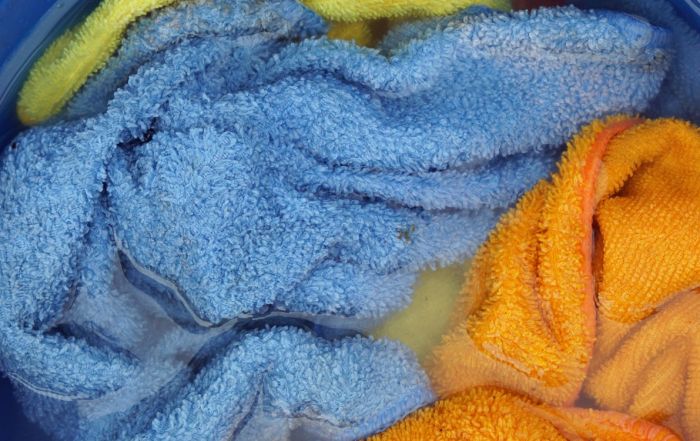Dry Food Storage – How Vital is it to Food Safety?
Common in many food safety training classes is a rich discussion about many topics – produce storage temperatures, the temperature at which eggs should be delivered, how to wash hands, how to properly calibrate a thermometer. One thing we often don’t talk about is the importance of proper dry storage. I remember going through our food safety inspection at the restaurants and the inspector would look at it – but it was really a superficial glance at the area.
If you look at many foodservice businesses, the dry storage area makes up a large portion of their overall inventory. Proper dry food storage is not just about keeping ingredients on the shelves; it’s about keeping them safe and maintaining a proper quality, so we don’t have waste. Here are some tips to help protect those dry goods in your inventory:
…safeguarding dry-stored items may not be as vital as our perishable items in the overall scheme of your food safety plan. But it is still important to a strong and active food safety (and food quality) program.
Keep it Dry
The first, and likely most important, rule of the dry storage area is to keep it dry. Moisture is the nemesis of many dry goods, causing clumping, mold growth, and an overall deterioration in quality. To combat this, having a climate-controlled storage area with proper ventilation is paramount.
Keep out Pests
How many remember the 6” rule? It is the one portion of protecting dry goods that is included in the food code. Pests are unwelcome guests in any kitchen and pose a significant threat to the integrity of dry goods. Being proactive with your pest prevention plan is crucial. Make sure your staff seal all dry goods to create a barrier against insects and rodents. Inspect storage areas regularly and be sure the area is being thoroughly cleaned by your staff. At our business, we ran into issues with no one wanting to “claim” the dry storage area, so we assigned it to our dish room staff. Be sure to inspect it regularly to make sure cleaning is taking place as expected.
Maintain Temperature Consistency
While dry goods are not as temperature sensitive as other raw ingredients we might deal with on a daily basis, maintaining a consistent temperature of the dry storage area will help to preserve the quality. While there is no official temperature, most will indicate that a good goal is to keep your dry storage area between 50ºF and 70ºF.
As always, be sure to label any open food. And never, never, never store chemicals in the same area as your food supplies. Several years ago, before there were any regulations that prohibited this practice, there was an incident at a mental hospital in Oregon where a patient who was helping in the kitchen mistakenly brought back roach poison, instead of the powdered milk he was asked to retrieve. This poison was then accidentally mixed into the scrambled eggs. Within minutes of consuming the tainted eggs, patients started to die. In the end, 47 patients died. While this is an extreme example andm any operators will say this would not happen in their business, we often find chemicals (even single bottles) mistakenly left in or around food supplies.
In the end, safeguarding your dry-stored items may not be as vital as our perishable items in the overall scheme of your food safety plan. But it is still important to a strong and active food safety (and food quality) program.
Don’t forget to check out our most recent SafeBites Webinar, “Cold and Flu: Prepare for the Season…it’s Coming!” If you have any topics you’d like us to address in 2024, please reach out and let me know. In the meantime, all of us here at FoodHandler wish you the very merriest of holiday seasons. Risk Nothing.
READ MORE POSTS
Embracing Technology for Enhanced Food Safety in Foodservice Operations
Technology. We love it, we hate it. I’ve always been fascinated by technology; I remember getting my first Blackberry in the mid-90s and thinking it was the pinnacle of technological advances. Before that, I remember ordering a dictation program in college that was going to revolutionize the way I “typed” my assignments. Looking back, it really wasn’t worth the box that the program came in. Now, we have ChatGPT that will write the entire paper for us!
Meat Color and Doneness: Persistent Pinking
Late in June, my family and I were able to visit the Black Hills, an area of the country in which I have not had the opportunity to spend much time. One evening, as we dined at a local restaurant, I observed a table across the dining room sending back a dinner. While I couldn’t hear the entire conversation and I certainly wasn’t trying to eavesdrop, it was apparent that the customer was unhappy with the cooking of their hamburger and was sending it back because it was too pink in the middle. That immediately brought to my mind the phenomenon known as persistent pinking. A term I became familiar with because of work done by some colleagues here at Kansas State, which they present each summer to a group of foodservice operators who join us on-campus for an in-depth week-long look at all things food safety.
Quat Binding – Why this Can Have a Disastrous Impact on Your Sanitation Program.
In June, I had the opportunity to represent FoodHandler and speak on food safety behavior for customers of Martin Bros. Distributing in Waterloo, Iowa. One of the questions that was asked caught me a little off guard. The question was about quat binding. It caught me off guard not because it was a bad question, but only because it was not something I had previously been asked nor had not yet been exposed to the phenomenon. However, I soon learned that in certain jurisdictions, it is resulting in changes to how sanitizing cloths are to be stored in sanitizing buckets (or not) in the foodservice industry. When I returned home from the trip, I had to dig into it to learn about what quat binding is and how it might impact foodservice operations.
Are Grades for Foodservice Inspections a Good Idea?
I generally try to stay away from controversial topics in my blog, but this is one I thought it might be interesting to discuss. Occasionally on my travels, I will come across a state or a local jurisdiction that requires foodservice inspection scores be posted in the window of the establishment. The idea is to allow would-be customers the ability to see how the foodservice operation in which they are about to eat scored on their latest health inspection.










